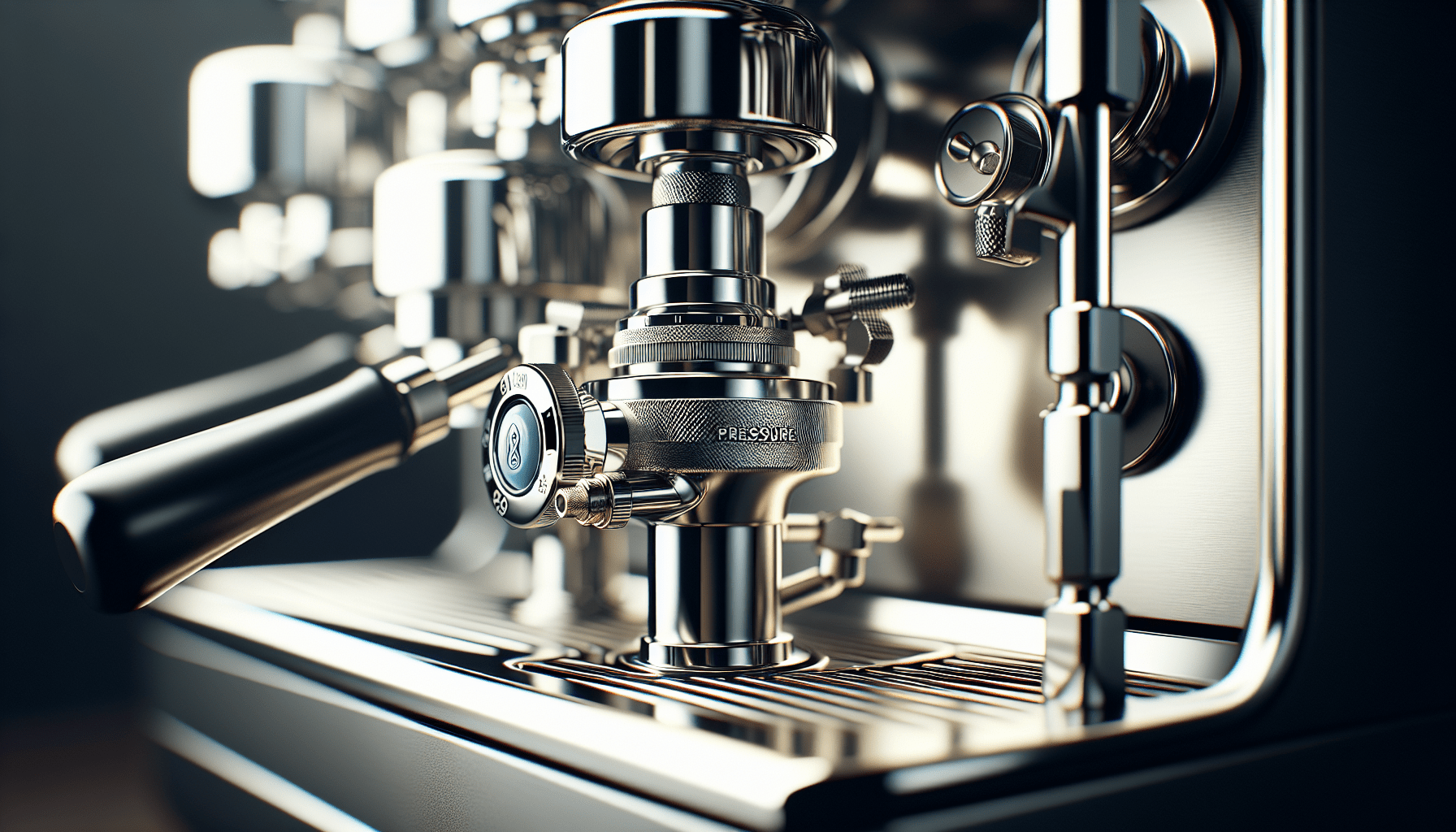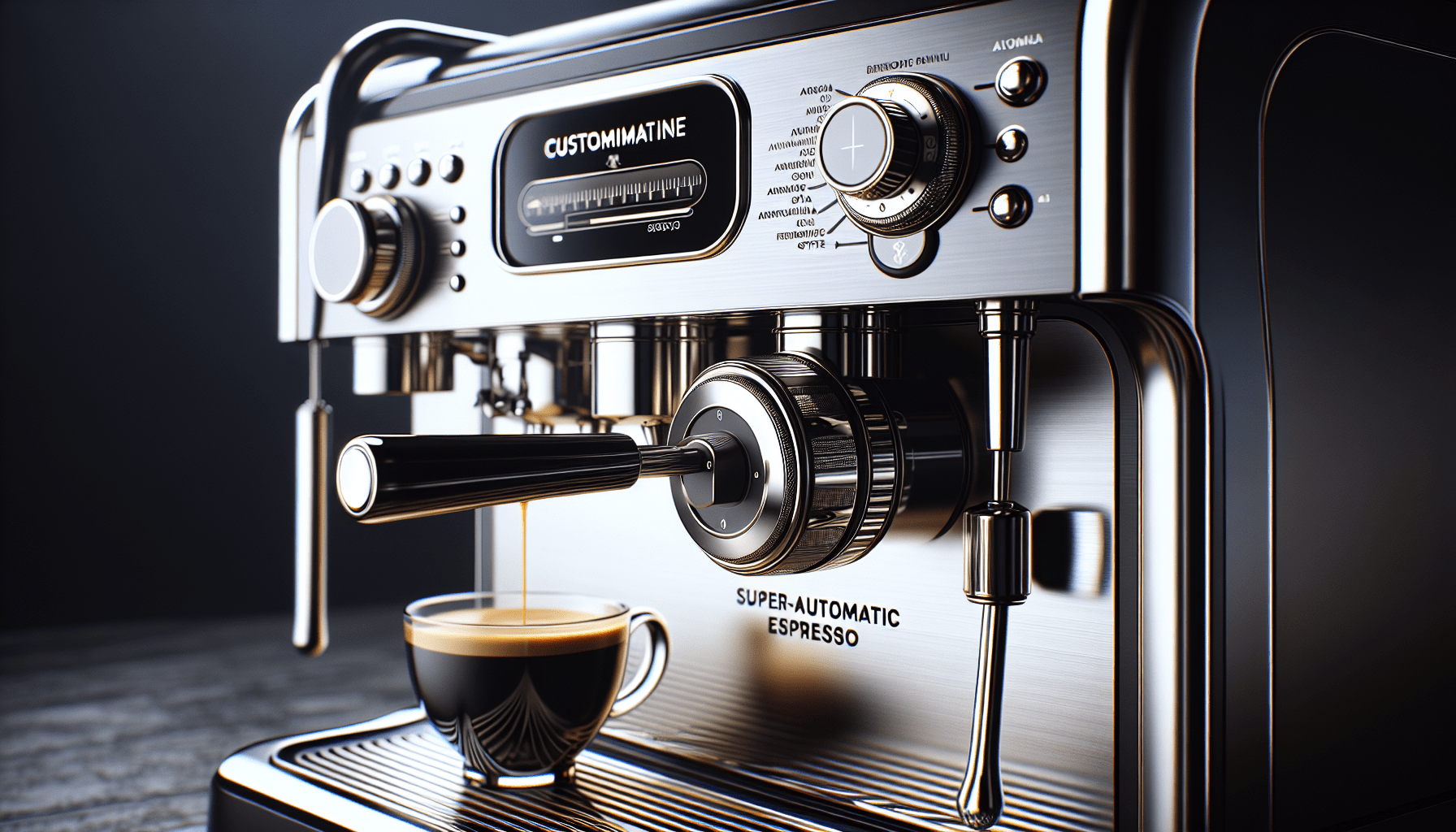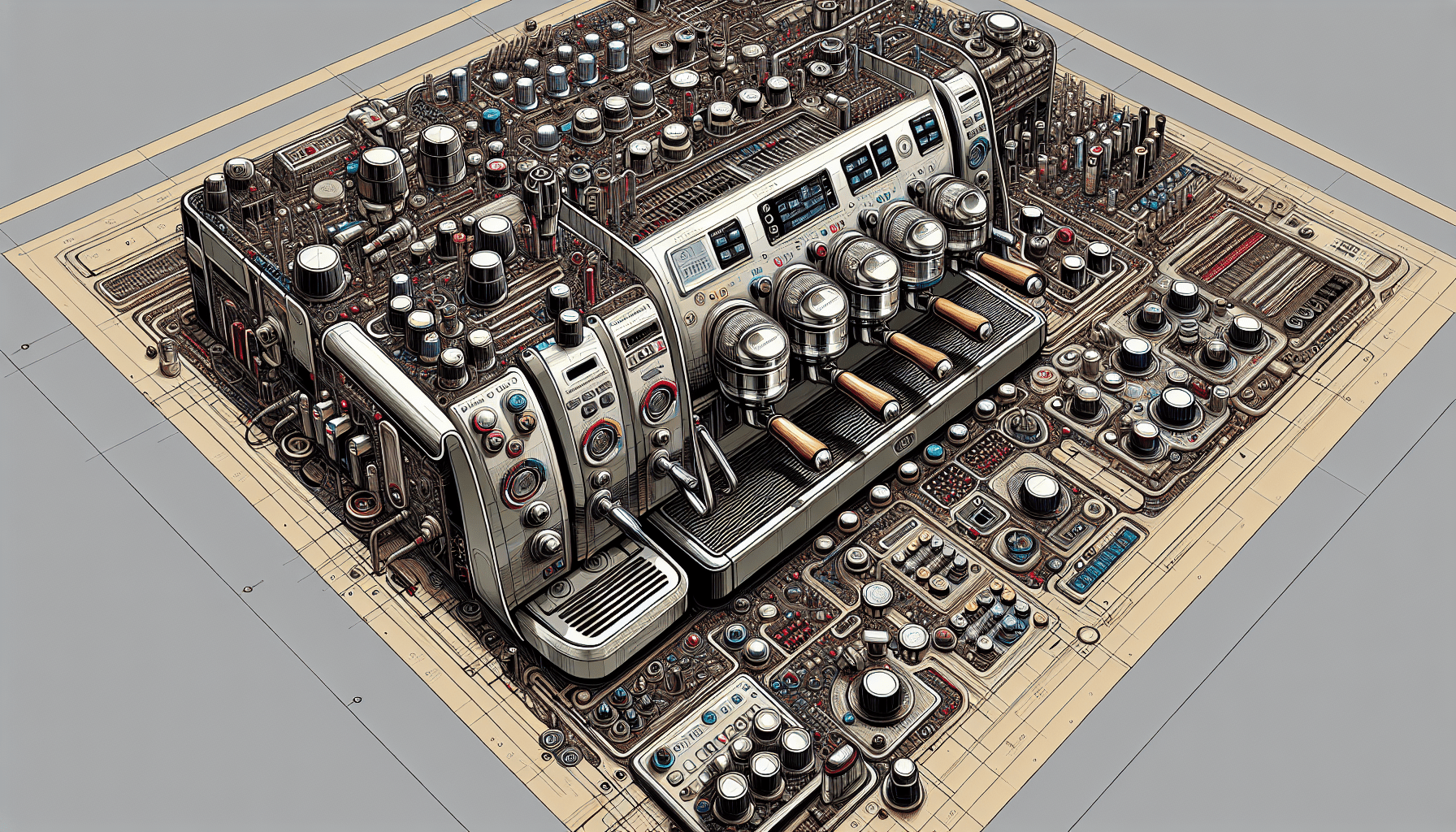Have you ever wondered about the safety features that come with super-automatic espresso machines? Well, you’re in luck! This article will give you a quick rundown of the various safety features that are commonly found in these machines. So, whether you’re a coffee aficionado or someone who simply enjoys a good cup of espresso, read on to discover the safety measures that ensure your brewing experience is not only convenient but also secure.
Automatic Shut-off System
Detects inactivity and shuts off machine after a certain period of time
One of the essential safety features found in super-automatic espresso machines is the automatic shut-off system. This system is designed to detect periods of inactivity and automatically turn off the machine after a predetermined period of time. This feature serves multiple purposes in ensuring the safety of both the machine and its users. By shutting off the machine when it is not in use, it helps prevent overheating, which can lead to potential fire hazards. This feature is particularly beneficial in environments where the machine may be left unattended for long periods, such as in coffee shops or offices.
Prevents overheating and potential fire hazards
Overheating is a serious concern when it comes to any electrical appliance, and super-automatic espresso machines are no exception. If left unattended or if there is a malfunction, the internal components of the machine can generate excessive heat. The automatic shut-off system plays a crucial role in preventing overheating by turning off the machine when it detects prolonged inactivity. By doing so, it mitigates the risk of potential fire hazards and ensures the safety of users and surrounding areas.
Pressure Safety Valves
Relieves excessive pressure built up in the machine
Pressure safety valves are an integral part of super-automatic espresso machines that work to relieve excessive pressure built up inside the machine. As these machines are designed to deliver pressurized water for brewing espresso, there is always a possibility of pressure build-up. If this pressure reaches unsafe levels, it can lead to potential hazards, such as explosions or leaks. The pressure safety valves act as safeguards in such situations by releasing the excess pressure, ensuring a controlled and safe operation of the machine.
Prevents explosions or leaks
The release of excessive pressure is crucial in preventing explosions or leaks, which can cause severe harm to both the machine and the users. In super-automatic espresso machines, the pressure safety valves are meticulously designed to open at specific pressure thresholds and divert the excess pressure away from the brewing system. This feature not only protects the internal components from damage but also safeguards users from potential accidents that may result from pressure-related malfunctions. Pressure safety valves are a fundamental safety feature that ensures the overall reliability and security of the machine.
Temperature Control Mechanisms
Maintains optimal brewing temperature
Maintaining the optimal brewing temperature is vital for achieving the perfect cup of espresso. However, it is equally important to consider the safety aspect of temperature control. Super-automatic espresso machines incorporate sophisticated temperature control mechanisms that go beyond delivering the desired taste. These mechanisms work diligently to ensure that the machine operates within a safe temperature range, thereby preventing scalding or burning accidents.
Prevents scalding or burning accidents
Without proper temperature control, there is a risk of hot water or steam being dispensed at dangerously high temperatures. This can result in scalding or burning accidents for the user, causing harm or injury. The temperature control mechanisms in super-automatic espresso machines closely monitor and regulate the heating elements, ensuring that the water and steam produced are at a safe temperature suitable for brewing. By eliminating the possibility of excessively hot water or steam, these mechanisms prioritize user safety and minimize the risk of accidents.
Boiler Safety Features
Thermostats to regulate boiler temperature
The boilers in super-automatic espresso machines play a crucial role in heating the water required for brewing. To ensure the safety and optimal performance of these machines, they are equipped with thermostats that regulate the boiler temperature. These thermostats monitor the temperature inside the boiler and adjust it as necessary to maintain safe levels.
Pressure gauges to monitor safe operating levels
In addition to thermostats, super-automatic espresso machines are also fitted with pressure gauges to monitor and indicate safe operating levels of the boiler. These gauges provide real-time information about the pressure inside the boiler, allowing users to ensure that it remains within the safe range. By having these boiler safety features in place, the risk of boiler malfunctions, such as pressure build-up or overheating, is significantly minimized, contributing to the overall safety and reliability of the machine.
Safety Interlocks
Ensure that the machine components are in proper position for operation
Super-automatic espresso machines are equipped with safety interlocks to ensure that all the machine components are in the proper position for safe operation. These interlocks act as fail-safe mechanisms, preventing accidental activation or injury during the brewing process. Before the machine can be properly operated, all the components, such as the brew group, drip tray, and water reservoir, must be securely in place and aligned with the interlocks. This ensures that the machine is ready for use and minimizes the risk of any potential accidents caused by improper component placement.
Prevent accidental activation or injury
By requiring the correct positioning of machine components, safety interlocks effectively prevent accidental activation, which can lead to unexpected operation and potential injuries. For example, if the brew group is not properly aligned, the safety interlock mechanism will prevent the machine from dispensing coffee or engaging in any brewing functions. This mechanism offers peace of mind to the user, knowing that the machine will not operate unless all the necessary components are locked and in their correct positions.
Safety Certifications
Certified by organizations like UL, ETL, or NSF
To ensure the highest level of safety standards, super-automatic espresso machines undergo rigorous testing and certification by organizations such as UL (Underwriters Laboratories), ETL (Intertek), or NSF (National Sanitation Foundation). These certifications are important indicators of adherence to established safety protocols and compliance with industry-specific regulations. When purchasing a super-automatic espresso machine, it is recommended to look for these certifications as they provide assurance of the machine’s safety features and overall reliability.
Indicates adherence to safety standards
Safety certifications serve as proof that the manufacturer has designed and manufactured the machine in accordance with industry standards and guidelines. By adhering to these standards, super-automatic espresso machines display a commitment to ensuring the safety of users. The certification process involves rigorous testing of various safety features, materials used, and overall performance. As a result, consumers can have confidence in the safety and quality of certified machines, knowing that they have met the necessary criteria to earn such certifications.
Water Level Sensors
Detects low water levels to prevent dry boiling
Dry boiling, where there is insufficient water in the machine’s reservoir for the brewing process, can lead to irreparable damage to the heating elements and potentially pose a safety risk. To prevent this, super-automatic espresso machines are equipped with water level sensors that detect low water levels and alert the user or initiate appropriate actions to avoid dry boiling.
Protects heating elements from damage
Water level sensors play a critical role in protecting the heating elements of super-automatic espresso machines from damage. These sensors ensure that there is an adequate amount of water in the reservoir before the brewing process begins. If the sensors detect low water levels, they can pause the operation, alert the user, or prevent the machine from running, thereby preventing the heating elements from being exposed to the air and potentially burning out. By safeguarding the heating elements, water level sensors contribute significantly to the longevity and safety of the machine.
Overload Protection
Monitors electrical load to prevent overloading
Super-automatic espresso machines are complex electrical appliances, and there is always a risk of overloading the internal components or electrical circuits. To mitigate this risk, these machines incorporate overload protection mechanisms that continuously monitor the electrical load and prevent overloading.
Avoids damage to internal components or electrical circuits
Overloading the electrical components of a super-automatic espresso machine can lead to various issues, ranging from malfunctions to permanent damage. The overload protection feature helps avoid such scenarios by automatically cutting off the power supply or triggering safety measures when it detects excessive current flow. This ensures that the internal components and electrical circuits are not subjected to stress beyond their intended capacity, thus prolonging the lifespan of the machine and enhancing its safety and reliability.
Integrated Grinder Safety Features
Auto shutoff if excessive force is applied during grinding
Super-automatic espresso machines often feature integrated grinders for the convenience of freshly ground coffee. These machines include safety features in the grinder mechanism to prevent accidents or damage caused by excessive force applied during grinding. If the grinder is subjected to an unusually high force or encounters an obstruction, it will automatically shut off to protect the internal components and, more importantly, to prevent any harm to the user.
Prevents accidents and damage to the grinder
The integrated grinder in a super-automatic espresso machine consists of sharp blades and rotating parts, which can pose a risk if mishandled or used improperly. By incorporating auto shutoff safety features, the machine minimizes the potential for accidents resulting from misuse of the grinder. It also prevents damage to the grinder itself, ensuring that it operates within the safe limits and maintains its efficiency over time.
Cleaning and Maintenance Safety
Ensures proper cleaning processes with clear instructions
Proper cleaning and maintenance of super-automatic espresso machines are essential for their optimal performance and longevity. To facilitate safe and effective cleaning, these machines are designed with built-in safety features that provide clear instructions and guidance for the cleaning process. These instructions often include details on how to dismantle and clean various parts, ensuring that users can carry out their cleaning tasks without putting themselves at risk.
Avoids injuries from mishandling or misuse during maintenance
Super-automatic espresso machines can have intricate internal components that require regular maintenance to keep them functioning optimally. The cleaning and maintenance safety features aim to reduce the risk of injuries or accidents that may occur during these processes. By providing clear instructions and guidelines, users can handle the cleaning and maintenance tasks confidently, minimizing the likelihood of mishandling or misuse that may result in personal injury or damage to the machine itself.
In conclusion, super-automatic espresso machines incorporate a wide range of safety features to ensure the well-being of users and the longevity of the machines. From automatic shut-off systems and pressure safety valves to temperature control mechanisms and safety interlocks, these features work in tandem to prevent hazards such as overheating, explosions, scalding, and accidents. Additionally, certifications from reputable organizations and the inclusion of safety measures such as water level sensors, overload protection, and integrated grinder safety features further enhance the reliability and safety of these machines. Lastly, the provision of clear instructions for cleaning and maintenance processes aids in minimizing the risk of mishandling or misuse. When investing in a super-automatic espresso machine, it is important to consider the comprehensive range of safety features it offers to ensure a safe and enjoyable brewing experience.




